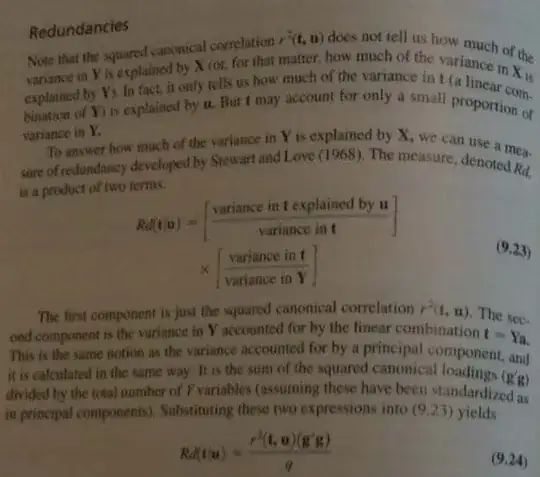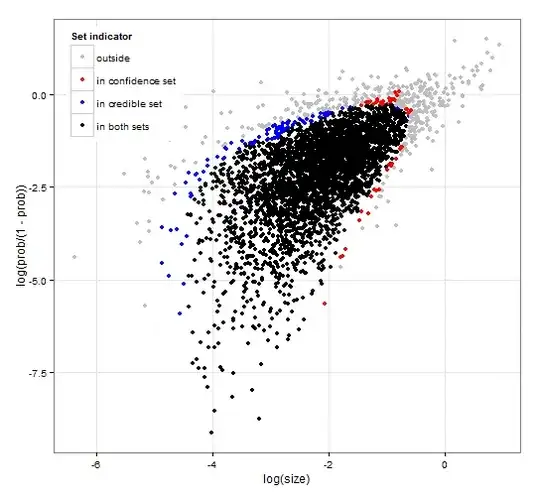I am reading a material about canonical correlation and it introduces a concept named "redundancy". I have been puzzled for one day but still could not get a understanding. The following is a screen capture of the part discussing "redundancy".
where $\bf{Y}$ is the dependent variable vector, $\bf{X}$ is the independent variable vector, $\bf{u}$ is the canonical linear combination of $\bf{X}$ and $\bf{t}$ is the canonical linear combination of $\bf{Y}$. $\bf{u}=\bf{X}\bf{b}$ and $\bf{t}=\bf{Y}\bf{a}$.
I have several questions.
- Why this concept is named redundancy? Is there any intuitive interpretation?
- Why the first term of $Rd(\bf{t}|\bf{u})$ is just the squared canonical correlation $r^2(\bf{t},\bf{u})$?
- Why the second term is $\frac{\bf{g}'\bf{g}}{q}$?
Here $\bf{g}$ is the correlation between $\bf{Y}$ and $\bf{t}$.
